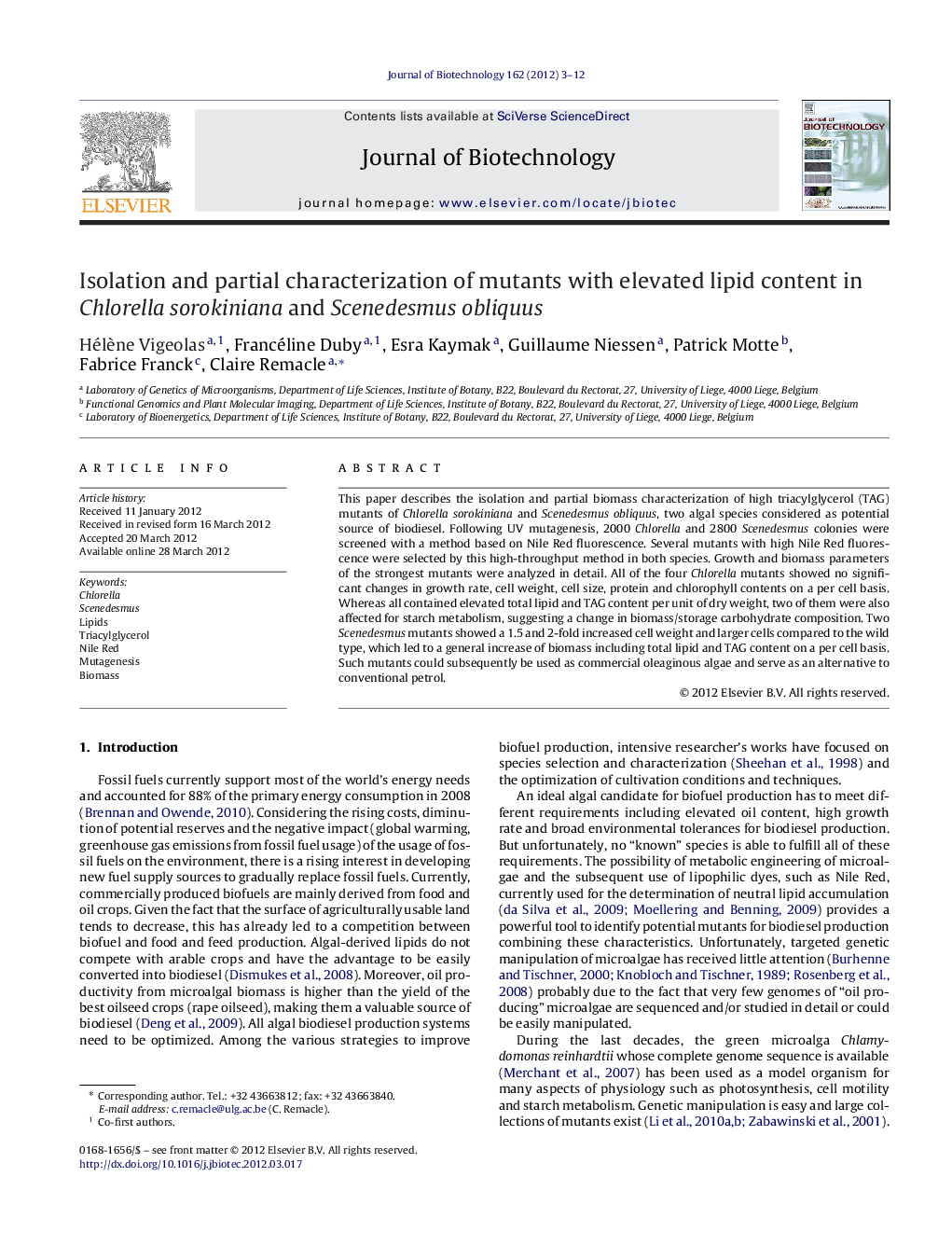| Article ID | Journal | Published Year | Pages | File Type |
|---|---|---|---|---|
| 23645 | Journal of Biotechnology | 2012 | 10 Pages |
This paper describes the isolation and partial biomass characterization of high triacylglycerol (TAG) mutants of Chlorella sorokiniana and Scenedesmus obliquus, two algal species considered as potential source of biodiesel. Following UV mutagenesis, 2000 Chlorella and 2800 Scenedesmus colonies were screened with a method based on Nile Red fluorescence. Several mutants with high Nile Red fluorescence were selected by this high-throughput method in both species. Growth and biomass parameters of the strongest mutants were analyzed in detail. All of the four Chlorella mutants showed no significant changes in growth rate, cell weight, cell size, protein and chlorophyll contents on a per cell basis. Whereas all contained elevated total lipid and TAG content per unit of dry weight, two of them were also affected for starch metabolism, suggesting a change in biomass/storage carbohydrate composition. Two Scenedesmus mutants showed a 1.5 and 2-fold increased cell weight and larger cells compared to the wild type, which led to a general increase of biomass including total lipid and TAG content on a per cell basis. Such mutants could subsequently be used as commercial oleaginous algae and serve as an alternative to conventional petrol.
► High neutral lipid mutants from Chlorella and Scenedesmus have been isolated. ► The screening is based on Nile Red fluorescence. ► 4 Chlorella mutants display higher total lipid and TAG contents per dry weight. ► 2 Scenedesmus mutants present higher total lipid and TAG contents on a per cell basis.
